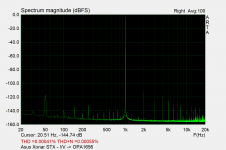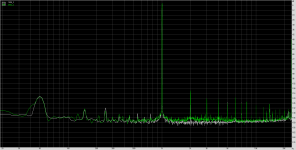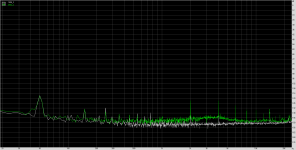Oh I'm remembering a few years back, on a french forum on my request we had done a Nazar's clone with SMD components. It was a tiny and warmy PCB, but all pictures and links have been lost, except the first post... <<Help: alim "Nazar" pour alimenter 3 AOP d'un DAC>> - 30016242 - sur le forum <<Sources et DAC>> - 1057 - du site Homecinema-fr.com
Funny to read my messages 7 years later
Don't know if you can see the 2 .zip files if you're not login ? Don't know either if I still have that thing somewhere in my home 😕
Funny to read my messages 7 years later

Don't know if you can see the 2 .zip files if you're not login ? Don't know either if I still have that thing somewhere in my home 😕
About LT3042 you can ask him? The AVDDs and DVDDs are also supplied by LT3042 LDOs set to output 3.3V. 🙂
If you're open to unconventional approaches then I can't recommend a CLC filter between DAC and I/V stage highly enough. Normally the I/V opamp is critical to the subjective SQ but with the filter installed in my own (multibit) DAC good SQ can be had from lower-spec'd I/V opamps. Which makes sense to me technically as with the filter, the I/V stage is no longer slewing at sample transitions.
Thats very interesting ..what cutoff frequency you are using on the CLC ?
Did you find any reduction on THD+N ?
As I'm running my DAC NOS, I have the cut-off frequency set as low as possible, about 20kHz (subject to inductor tolerances).
THD+N doesn't change for lower frequencies that I've been able to see, but with a NOS DAC the measured THD gets better at high freqs. Though this is just an artifact of how THD measurement works - the distortion isn't harmonic distortion at all, its DAC image frequencies.
THD+N doesn't change for lower frequencies that I've been able to see, but with a NOS DAC the measured THD gets better at high freqs. Though this is just an artifact of how THD measurement works - the distortion isn't harmonic distortion at all, its DAC image frequencies.
Very cool board!
Here is a little tech note I wrote about the output stage of the PCM1794A. This mostly focuses on the gain balancing from the first and second stage. Another thing to consider is that you do not necessarily need symmetrical supplies for the first stage. The inputs stay at the virtual ground, so that stage does not really need a high voltage positive supply.
http://www.ti.com/lit/an/sbaa333/sbaa333.pdf
I think it's great that 1) there is a new application note for this 15-year-old part, and 2) TI employees are up here doing outreach. Thanks for publishing this!
While I've not read the app-note entirely, there is one sentence that makes me smile:
"A JFET or bipolar-input amplifier is recommended for its low
voltage-noise."
=> So what does that really mean?
Avoid CMOS opamps?
But wait, I've learned that the OPA1656 is a CMOS input device, while still beeing a superb opamp, even recommended for I/V from the designer himself....
"A JFET or bipolar-input amplifier is recommended for its low
voltage-noise."
=> So what does that really mean?
Avoid CMOS opamps?
But wait, I've learned that the OPA1656 is a CMOS input device, while still beeing a superb opamp, even recommended for I/V from the designer himself....
Misprint for "A bipolar-input amplier is recommended..." I guess.While I've not read the app-note entirely, there is one sentence that makes me smile:
"A JFET or bipolar-input amplifier is recommended for its low
voltage-noise."
=> So what does that really mean?
Why they didn't just suggest limits for voltage and current noise escapes me,
ie something more like "To get datasheet performance from the DAC the amplifier needs to have at most xxx nV/sqrt(Hz) and at most yyy pA/sqrt(Hz)."
But total noise is the RMS sum of voltage noise and current noise (multiplied by the appropriate resistance). The can't be specified separately and assumed to be independent.
While I've not read the app-note entirely, there is one sentence that makes me smile:
"A JFET or bipolar-input amplifier is recommended for its low
voltage-noise."
=> So what does that really mean?
Avoid CMOS opamps?
But wait, I've learned that the OPA1656 is a CMOS input device, while still beeing a superb opamp, even recommended for I/V from the designer himself....
Should be fine with OPA1656 (please ignore hum & his harmonics):
(first pic -> quick test loopback Asus Xonar STX)
(second pic and third -> compared LM4562 with OPA1656)
Attachments
Last edited:
For an ideal 24bit DAC from a noise perspective the I/V convertors want to be < 0.3pA/√Hz current noise, and be matched to that 750 input noise impedance. 24 bit current outputs with 7.5mA fullscale at 192kHz have that level of inherent quantization noise.
The actual DAC performance according to the datasheet peaks in mono mode at 132dB S/N though, suggesting its about 20 bit performance at best for noise (and worse still for distortion, about 18 bit)
So the desired opamp performance for I/V conversion is < 4pA/√Hz and < 3nV/√Hz, and < 0.0004% THD. LM4562 might be good bet here.
The differential->single ended opamps have no requirement for low current noise.
In both roles the opamps need to drive low impedance loads.
[ Hopefully I've got my sums right here! ]
The actual DAC performance according to the datasheet peaks in mono mode at 132dB S/N though, suggesting its about 20 bit performance at best for noise (and worse still for distortion, about 18 bit)
So the desired opamp performance for I/V conversion is < 4pA/√Hz and < 3nV/√Hz, and < 0.0004% THD. LM4562 might be good bet here.
The differential->single ended opamps have no requirement for low current noise.
In both roles the opamps need to drive low impedance loads.
[ Hopefully I've got my sums right here! ]
So the desired opamp performance for I/V conversion is < 4pA/√Hz and < 3nV/√Hz, and < 0.0004% THD. LM4562 might be good bet here.
You´re right, in this application, the LM4562 & NE5532/4A is on par in terms of THD / Noise and (very) hard to beat.
To my surprise, the OPA1656 works very well in this i/v position, betters the 2 above about 2-3 dBFS.
cheers,
guenther
Last edited:
thank you for this application
Very cool board!
Here is a little tech note I wrote about the output stage of the PCM1794A. This mostly focuses on the gain balancing from the first and second stage. Another thing to consider is that you do not necessarily need symmetrical supplies for the first stage. The inputs stay at the virtual ground, so that stage does not really need a high voltage positive supply.
http://www.ti.com/lit/an/sbaa333/sbaa333.pdf
- Home
- Source & Line
- Digital Line Level
- Opamps for PCM1794 I/V conversion?


